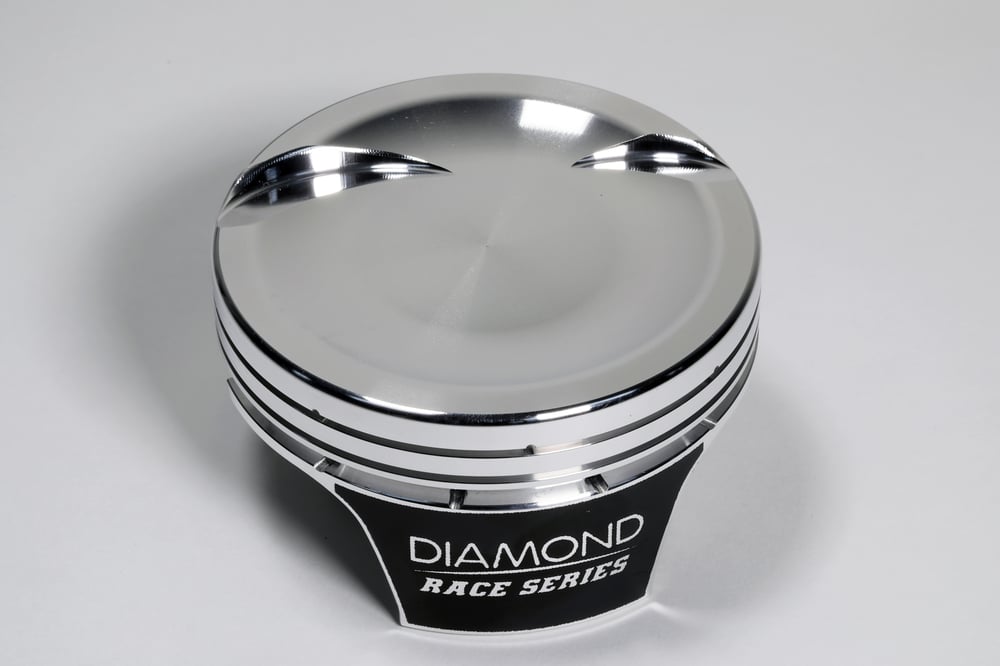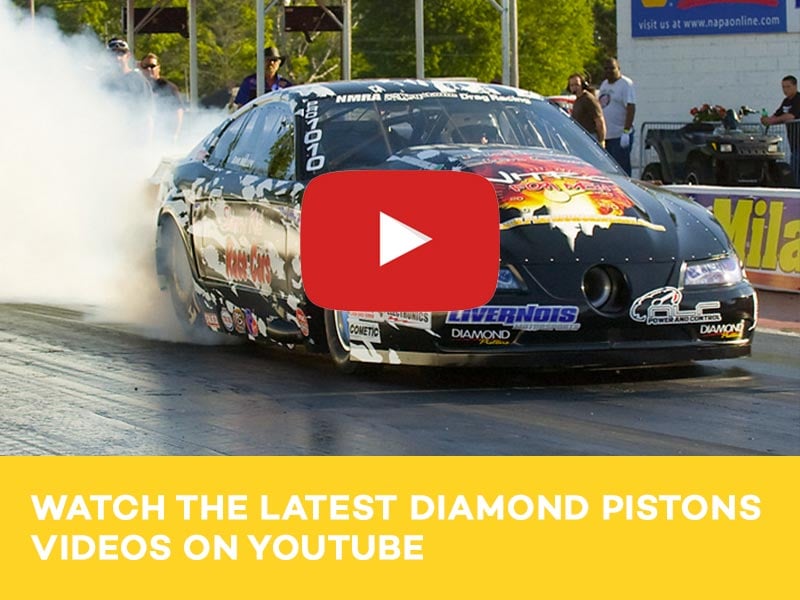Designing a piston for 2,000 horsepower, out-of-the-box duty is an exercise in patience, engineering excellence, and collaboration with top drag teams.
A long-standing performance tenant holds that piston selection must always serve the final application. That is particularly true as it applies to the unique requirements of building racing engines. As a rule, inexpensive cast pistons are for run of the mill production cars and forged pistons are for racing and high performance. Holding firm to the middle ground, hypereutectic pistons are touted as a less expensive alternative to forgings, yet a step up from castings in terms of strength and the ability to still fit them with tighter clearances. That’s been the case for many decades, but the performance revolution we all attribute to the advent of user friendly, high tech electronic engine management combined with turbos and supercharging has radically altered the game board.
For A Full Product Catalog, Click Below:
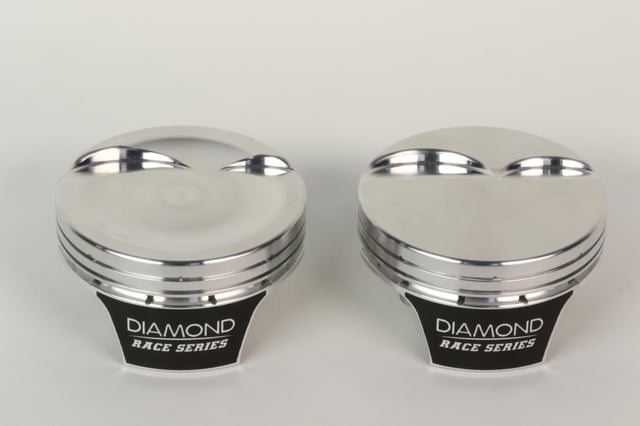
Traditionally, racing applications have required custom-ordered pistons tailored specifically to the application. Builders would specify crown configuration, pin height, ring pack selection, valve pockets and other factors to get a piston that exactly fit their needs. Over time many of those requirements have standardized, creating a window of opportunity to manufacture race quality dealer stocking piston sets that reduce or eliminate the need for custom pistons. The rapid horsepower escalation of recent years has highlighted and driven the need for a new breed of readily available race ready pistons
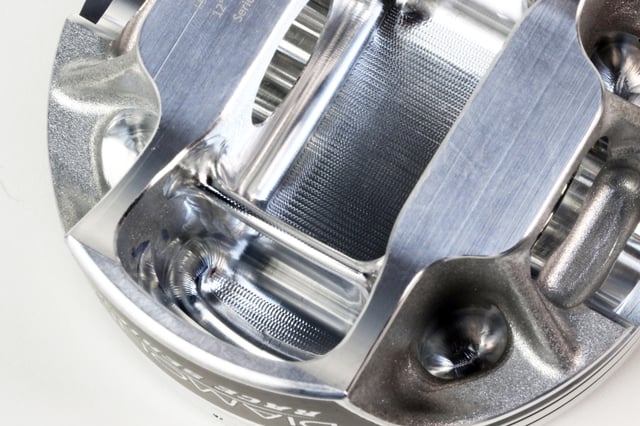
Supplemental aspiration or “boost” as we all know it has become the new reality across the board. Enthusiasts have eagerly embraced its benefits and learned to deal with the consequences that sometimes accompany the excess application of it. The popularity of newer engines such as the GM LS series has highlighted the amazing potential of supercharging and motivated a new generation of supercharging enthusiasts who are also piston buyers. Recognizing the potential of that movement, Diamond Pistons endeavored to develop a new line of pistons that would serve that growing market in terms of power capacity in a shelf-stocking piston.
The result of that development program is Diamond Pistons’ LS Race Series pistons as off-the-shelf stocking parts capable of supporting boosted LS engines up to 2000 horsepower. Prior to this, a piston of this design intent and performance capability could only be obtained via custom ordering with an extended waiting period. Diamond’s new pistons represent an industry first in terms of horsepower capacity in a shelf-stocking part.
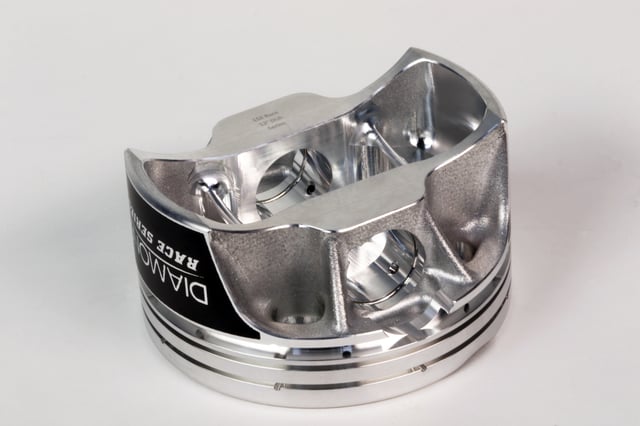
Considerable forethought went into conceptualizing the new piston line as engineers initially set some lofty performance goals. The primary intent was to fully support boosted engine requirements up to 2000 horsepower with all the most desirable features of a race piston in a piece that did not have to be custom made for the application. A two-year development program with a top performing LS drag-racing team helped finalize the design features that now allow racers to order fully capable 2000 horsepower pistons right off a dealer’s shelves.
Design Benchmarks
- 2,000 horsepower capability
- Ready to install, with no finish work required
- Pistons in-stock to eliminate lead times
- Valve pockets to accommodate 15-degree and 12-degree aftermarket and OEM cylinder heads.
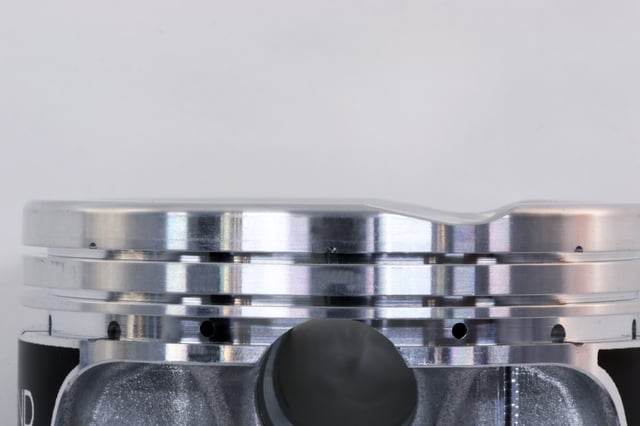
These fully strutted 2618 alloy forgings are made with a reinforced, contoured piston crown and thicker ring lands to maximize strength and resists ring land collapse under high cylinder pressures. 3D crown milling is incorporated into the manufacturing process to ensure precise crown shaping and optimum strength to withstand higher cylinder pressures and the accompanying heat stress. Specific heavy-duty skirt designs to maximize strength and minimize parasitic frictional losses are further supplemented by moly-coating to reduce friction.
Key Performance Features
- Fully strutted, 2618 aluminum alloy forgings
- Lateral gas ports
- 3D-finished precision 0.230-inch thick crown to optimized strength and minimize weight
- 0.280-inch top ring land depth for ultimate strength and stability
- Valve pockets accommodate 15-degree and 12-degree aftermarket and OEM heads
- H-13, tool-steel, Trend wrist pins
- Accepts Total Seal AP Stainless top ring, Napier-style second ring
- Skirt clearance for all common stroke lengths
Development Goals and Process
Achieving these goals in a shelf stocking piston is not as easy as it sounds. It requires critical evaluation of all popular cylinder head combinations, chamber shapes, bore sizes, valve sizes and angles, stroke lengths and rod lengths, pin placement and desired compression ratios to accommodate all conceivable requirements. That would include optimizing piston crown shape and strength, valve placement and ring pack position for best performance and reliability.
Ring placement is a primary concern for any piston application. In normally aspirated race applications the ring pack is often moved as close to the crown as the valve reliefs will allow. Increasing the distance between the skirt and the ring pack stabilizes the piston in the bore and reduces the crevice volume above the compression ring, thus influencing the pressure distribution within the ring pack which can affect ring performance and combustion efficiency at high engine speeds.
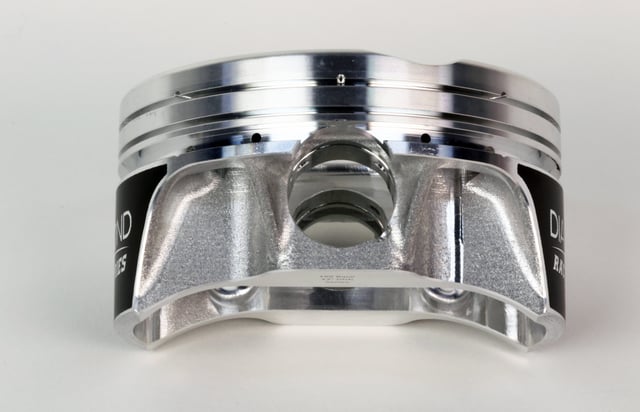
These new Diamond pistons are all intended for power adder applications. Hence the ring pack is located farther down the piston than normal to help isolate it from the increased heat.
To further support ring sealing under high boost pressure, the new pistons are equipped with lateral gas ports for the top ring. Lateral ports are more effective in this case because they are more isolated from high initial combustion temperatures and are less likely to be affected by carbon contamination. It also eliminates vertical holes that might not deal well with high heat and cylinder pressure, and of course detonation which is often present under severe conditions.
Among the compelling reasons to create shelf-ready race pistons of this caliber we can note that many race combinations are surprisingly similar. Short blocks come in different sizes with a known range of bore diameters, stroke lengths and rod lengths. Once you accommodate that, the challenge is to make sure the pistons are compatible to the popular range of cylinder heads and combustion chambers. Chamber sizes and the relatively common use of O-ringing and copper head gaskets means you can narrow down the applications the piston line needs to serve. Ease of application is further served because the pistons are designed to accept the popular Total Seal AP Stainless top ring and Napier-style second ring. So ring sets are also off the shelf items.
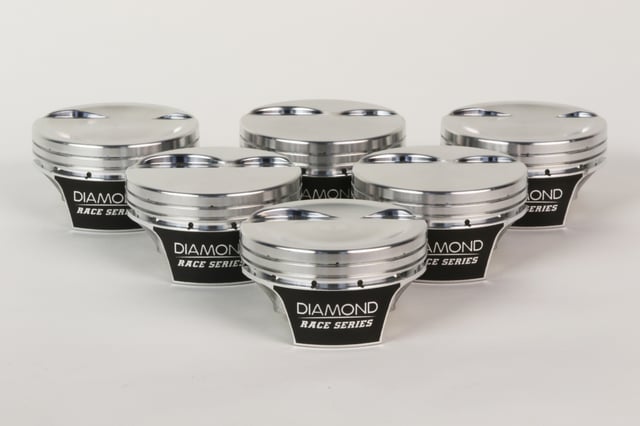
Thicker, contoured crowns, robust ring lands and lower ring pack positioning get you most of the way there with flat top pistons and careful attention to the most common valve angles. By serving the market more efficiently with shorter wait times, Diamond is helping racers build reliable boost-ready short blocks compatible with the most popular cylinder heads in use today. By incorporating all the most desirable features in these new stocking pistons, Diamond has made them quicker and easier to obtain, and reduced the amount of prep necessary for assembly.
Of course, Diamond will still build you any custom piston you may require for non-mainstream applications. But these new stocking pistons represent a great step forward for shops building a series of identical or similar engines for impatient customers who are anxious to race. These pistons incorporate all the desirable features for building supercharged, high-horsepower short blocks while also accommodating the various cylinder heads racers and builders have available to them.

